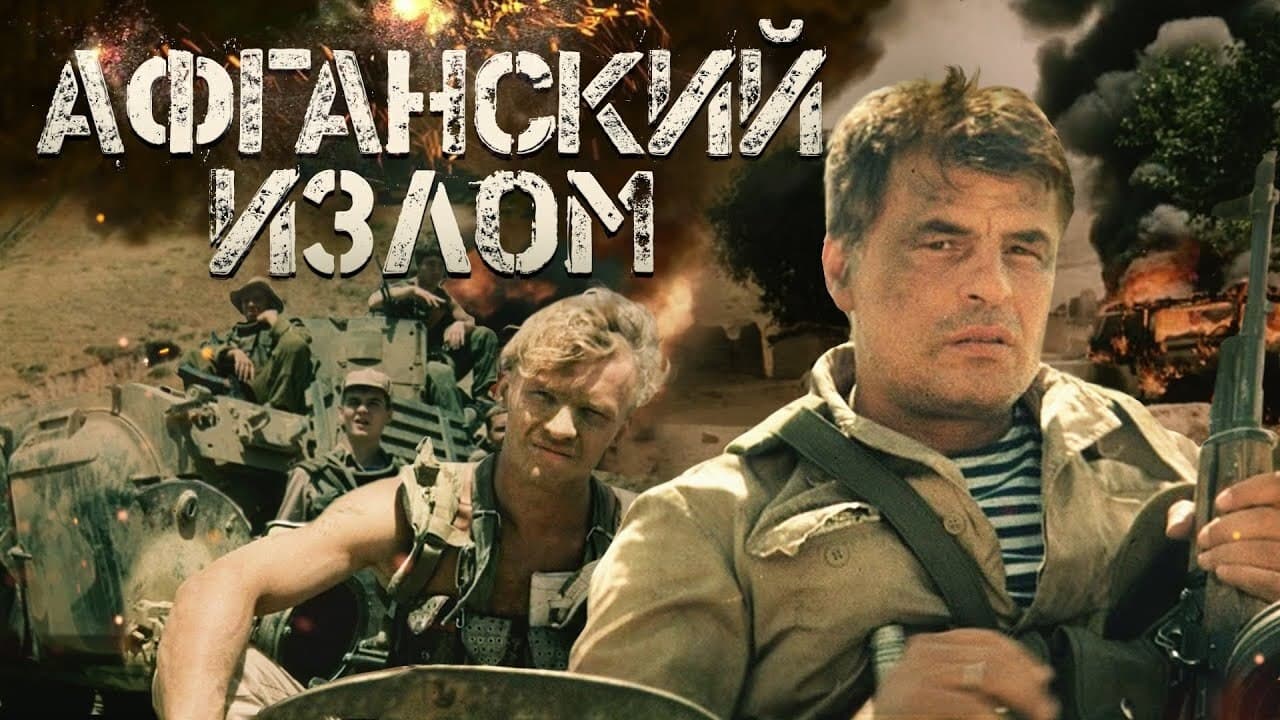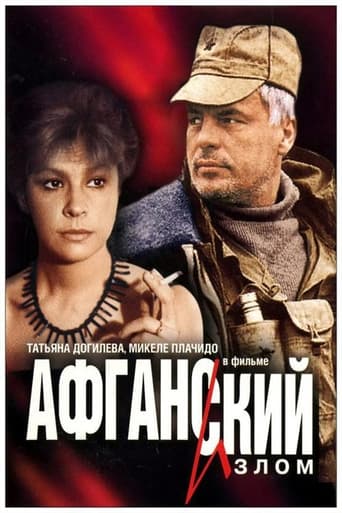

American war movie fans might be bored out of their skulls by this movie, but that boredom is born of ignorance. Guerrilla suppression operations are always like that. Sit around and wait, get some hookers, get drunk at the base, wheel and deal with the businessman, kick a prisoner around, cover up the killing of the street merchant by the green private. Then, boom, there goes two fuel trucks, and for 10 minutes a small-arms battle with one high-caliber machine gun. Then wait for brass to plan a way to knock out their stronghold, and then end up killing a few civilians in the process of doing it. If reality doesn't work for Western viewers, there's always Top Gun or Rambo (Top Gun realistic? nope)The best part of Afganskiy Izlom's realism was the way all the planes dropped flares like confetti. They had to do that because Carter and Reagan gave the Mujahedin so many missiles. Also, the wave of Mi-24's was excellent, a better helo attack even than Apocalypse now. The sight of their missiles dropping and shooting was a scene of impending "death from above" for whoever they were aimed at.It's funny how the Soviets were able to make an honest Afghanistan movie within a year after their departure, but it took the US six years. Afganskiy Izlom is just as real if you apply it to NATO's occupation too. Someone will always pick up the gun and shoot you cause they care more about the land. It's a movie Westerners should watch. Unfortunately I don't think anyone has ever made English subtitles; I might have to make some.
... View MoreI would recommend this as the most successful attempt so far to make a movie on Soviet Afghan war. And it is very honest and responsible picture starting from small details of uniforms and weapons up to human relations, war routine and Central Asian landscapes. It's been shot in Tajikistan just after the the troop withdrawal which happened in 1989 not in 1985. The Italian star Mr. Placido was just perfect in the role of Major Bandura. Other characters looked also very natural especially always drunk club managing officer:-).The scenario seems a bit jammed in the end but it might be an impact of the Civil war in Tajikistan which had started right during the shooting of the film. All movie team had to escape sometimes even under fire. The last scene is purely "harakiri" type of behavior and reminded me the final phrase from one famous samurai movie - "We've won all battles but lost the war". It could be also a metaphor of USSR collapse - the great country allowing to shoot itself to the back by the small offended child.
... View MoreFrom the first to the last scene, this film is made very realistically,even too realistically that sometimes we can't see details in night scenes(it's dark as real night),in the desert(sunshine is so strong as in real desert). Script and actor's play are also very realistic. Shots and episodes are edited not to show things and events "effectively", to "explain" them, or,as many Hollywood films do, to "entertain" viewers. Editing here is to represent the events as if they really happened in Afganistan. Camera is set sometimes far from dying solders, even the moment when the main character Major Bandura is shot and killed.Such method reminds me of masterpieces of Italian neo-realism. And the construction of the story here is based on the same principles as "Paisà",or "The Bicycle Thief"--chronological series of "true to life" episodes and a few pathetic moments, which at first seem to be sudden and illogical, but have inner reasons.I think the inner reason of Major Bandura's suicidal death is religious emotion--Repentance for innocent people's death(not only his accidental killing of family in the village, but also death of solders under his command).He is not depicted as a eager believer,on the contrary he is depicted as tactful and responsible officer.Exactly for this reason his last decisions(to go back to the destroyed village and to turn his back to an armed boy, whose family he killed)seem an act of Repentance. The Russian Orthodox choral, which sounds at the end("Evening Sacrifice")is another context,by which all the film can be seen from this point of view.
... View MoreWell, the movie is basically about the last days of a specific Russian regiment stationed in Afghansitan, before the main troop withdrawal in 1985. The movie accurately portrays the grim realities of Russian army that have made it infamous: "dedovshina" (officers and NCOs physically harassing, beating and humiliating younger recruits), mixed character of war (you can trade with your enemy one day and kill him the next), life of women at the front lines, documentary footages of helicopter assaults, and coffins being soldered and sent home in heave C-130 Hercules class Russian cargo planes with tracer to jam Stinger missiles, fatigue, boredom, anti-war sentiment, emotional side simply put. The there's some action scenes, but they are poorly done, and often are illogical, like Major Bandura's suicidal walk and turning of his back to 10-year-old kid armed with AK-47 who's father he just killed. Also the fact that in the middle of firefight in the mountains heavy grenade launcher pops out of nowhere (and any half-bright person knows that it's virtually impossible to hump 40-50 lns launcher on the march anyone). But at the same time films shows that war is a dirty affair, where murder is sometimes condoned, wanton destruction of whole villages for little or no reason is normal, indiscriminate killing of civilians is overlooked as collateral damage inevitable during war... Some food for thought as to why Afghan war as lost.. Not the best war movie made, but profound and intelligent enough to be worth watching.
... View More